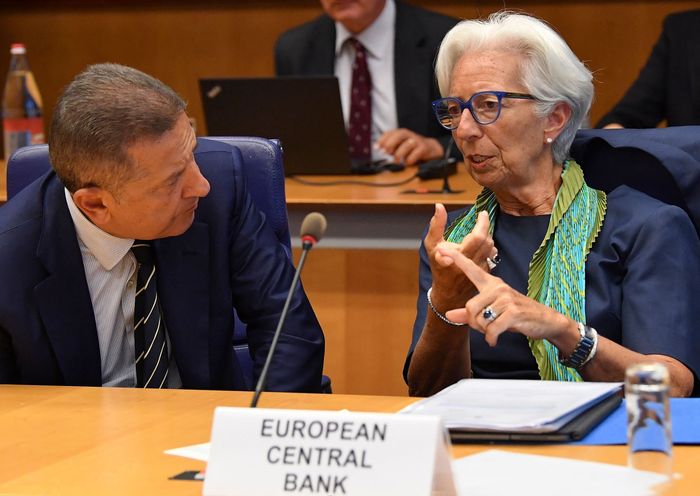What will happen to the euro following the ECB meeting?
It is rare to see an upcoming central bank gathering that sees the market as divided as Thursday’s ECB meeting.

The Standard Bank leans towards the view that ECB's rates will be left unchanged
>> Second round to fight inflation
Such high uncertainty suggests that the euro could move sharply in either direction depending on the outcome. However, while the euro could undoubtedly rise or fall sharply in the immediate aftermath of the rate decision and press conference, the lasting legacy seems much more likely to be negative for the euro than positive.
The Bloomberg poll of some 60 analysts shows that 55% see no change in rates on Thursday while the other 45% expect a 25-bps hike. Money market pricing currently puts the percentage probability of a 25-bps hike at 38%. In short, it is a very close call.
The Standard Bank leans towards the view that rates will be left unchanged but, even if we are wrong, it would not make us bullish for the euro save, perhaps, for the initial market response. The reason for this is that the context is not conducive to a stronger euro even if rates are raised. For recent weeks have seen a deluge of pessimism relating to the euro zone economy and one, importantly, where the difference between euro zone pessimism and US optimism has come to the fore.
Of course, it is worth remembering that all through this rate hike cycle, the euro zone economy has been quite soft, as have other G10 nations. But just recently a wave of pessimism seems to have developed, not just in the markets but also amongst many ECB policymakers as well. Indeed, this is part of the reason why it more likely that the Bank pauses this week. It is this negative context against which the ECB is acting that makes us feel that the euro is vulnerable whether it hikes or not.
“We have often spoke in the past about the interaction between monetary policy and currencies. And rather than some sort of contemporaneous relationship between rate levels and currencies we tend to find what we call diminishing marginal returns to rate hikes. What we mean by this is that currencies can often rally powerfully in the very early stages of a tightening cycle”, said the Standard Bank.
In fact, given the sort of forward guidance about policy that the ECB and others supply to the market, currencies start to lift off when the guidance becomes hawkish. This means that the currency often undergoes a rally even before the first rate hike in the cycle. But as the cycle progresses and rate hikes become the norm, so their ability to create marginal currency strength diminishes.
>> Which central banks will pause rate hikes?
Moreover, when central banks get close to the perceived end of the cycle the marginal currency benefit may be extinguished altogether. In the worst case, rate hikes may actually start to weigh on the currency because they are perceived to bring significant economic harm, and this seems to be the position that the ECB finds itself in right now. Put this way we might even be forgiven for thinking that the worst outcome for the euro over coming weeks could be a rate hike on Thursday, even if that’s not the way that the market initially takes any such news.
Does all this condemn the euro to a watery grave? Not necessarily, because most other central banks seem to be in a similar situation and hence, in relative terms the euro could be quite insulated. Another point to make is that changes in the direction of Fed policy are much more important for the currency markets than any other central bank, even the ECB.
As we know that the US tightening cycle will morph into an easing cycle at some point in the future, probably next year, euro bears could prove few and far between as they fear that any euro downside now could snap back into sustained and significant strength against the dollar once the Fed starts to guide the markets towards the prospect of lower US rates. With this in mind, bears of the euro should focus more on non-dollar currencies such as the yen, ‘riskier’ currencies like the aussie and kiwi, and arguably even many emerging market currencies.








